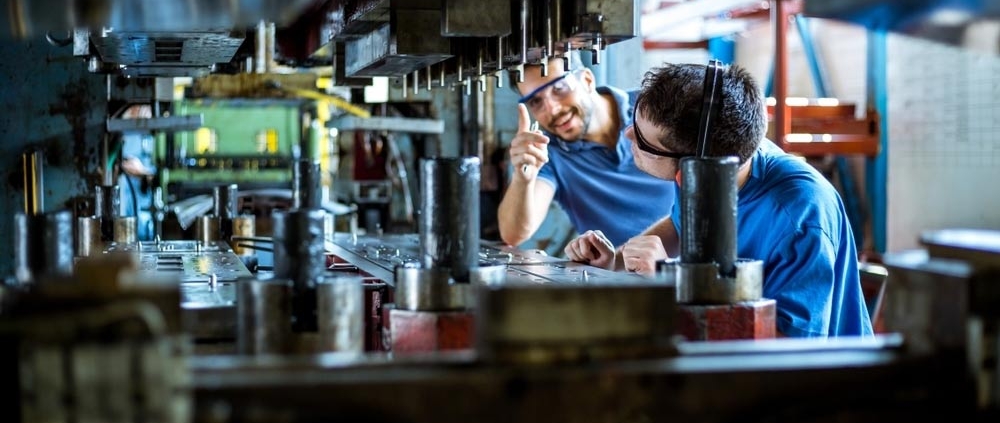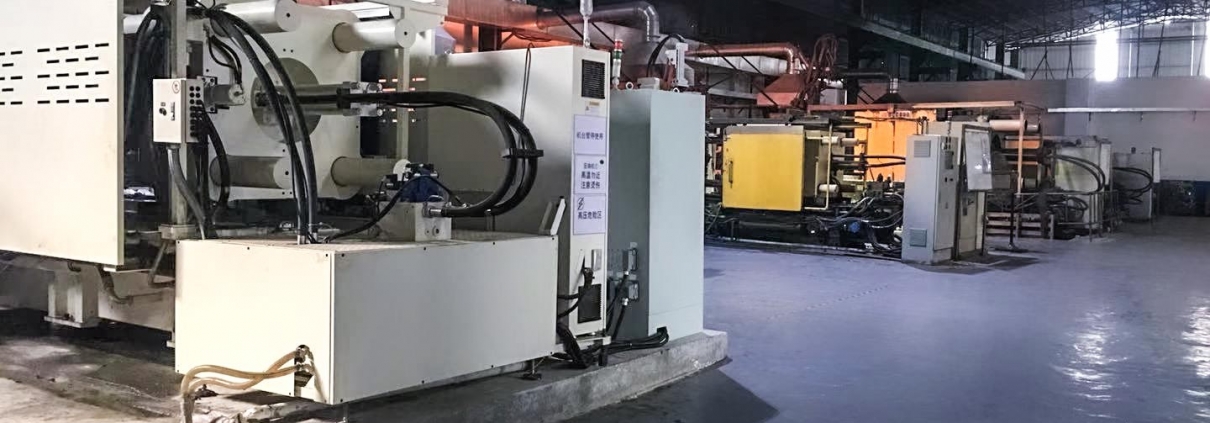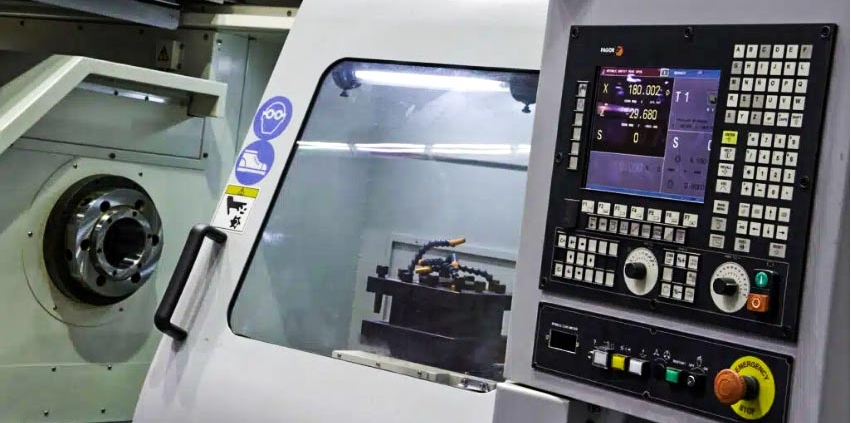Metal stamping is a cold-forming process that makes use of dies and stamping presses to transform sheet metal into different shapes. Pieces of flat sheet metal, typically referred to as blanks, is fed into a sheet metal stamping press that uses a tool and die surface to form the metal into a new shape. Production facilities and metal fabricators offering stamping services will place the material to be stamped between die sections, where the use of pressure will shape and shear the material into the desired final shape for the product or component.
1:Basic Concepts of Metal Stamping:
Metal stamping, also referred to as pressing, is a low-cost high-speed manufacturing process that can produce a high volume of identical metal components. Stamping operations are suitable for both short or long production runs, and be conducted with other metal forming operations, and may consist of one or more of a series of more specific processes or techniques, such as: Punching, Blanking, Embossing, Coining, Bending, Flanging.
Metal stamping machines may do more than just stamping; they can cast, punch, cut and shape metal sheets. Machines can be programmed or computer numerically controlled (CNC) to offer high precision and repeatability for each stamped piece. Electrical discharge machining (EDM) and computer-aided design (CAD) programs ensure accuracy. Various tooling machines for the dies used in the stampings are available. Progressive, forming, compound, and carbide tooling perform specific stamping needs. Progressive dies can be used to create multiple pieces on a single piece simultaneously.
2:Types of Stamping Operations:
Progressive die stamping
Progressive die stamping uses a sequence of stamping stations. A metal coil is fed into a reciprocating stamping press with progressive stamping dies. The die moves with the press, and when the press moves down the die closes to stamp the metal and form the part. When the press moves up, the metal moves horizontally along to the next station. These movements must be precisely aligned as the part is still connected to the metal strip. The final station separates the newly-fabricated part from the rest of the metal. Progressive die stamping is ideal for long runs, because the dies last a long time without becoming damaged, and the process is highly repeatable. Each step in the process performs a different cut, bend, or punching operation on the metal, thus gradually achieving the desired end-product shape and design. It is also a faster process with a limited amount of wasted scrap.
Transfer Die Stamping
Transfer die stamping is similar to progressive die stamping, but the part is separated from the metal trip early on in the process and is transferred from one stamping station to the next by another mechanical transport system, such as a conveyor belt. This process is usually used on larger parts that may need to be transferred to different presses.
Four-Slide Stamping
Four-slide stamping is also called multi-slide or four-way stamping. This technique is best-suited for crafting complex components that have numerous bends or twists. It uses four sliding tools, instead of one vertical slide, to shape the workpiece through multiple deformations. Two slides, or rams, strike the workpiece horizontally to shape it, and no dies are used. Multi-slide stamping can also have more than four moving slides.
Four-slide stamping is a very versatile type of stamping, as different tools can be attached to each slide. It also has a relatively low cost, and production is fast.
Fine Blanking
Fine blanking, also known as fine-edge blanking, is valuable for providing high accuracy and smooth edges. Usually done on a hydraulic or mechanical press, or by a combination of the two, fine blanking operations consist of three distinct movements:
1.Clamping of the workpiece or work material in place
2.Performance of the blanking operation
3.Ejection of the finished part
Fine blanking presses operate at higher pressures than those used in conventional stamping operations, hence tools and machinery need to be designed with these higher operating pressures in mind.
The edges that are produced from fine blanking avoid fractures as produced with conventional tooling and surface flatness can exceed that available from other stamping methods. Since it is a cold extrusion technique, fine blanking is a single-step process, reducing the overall costs of fabrication.
3:Types of Stamping Presses:
The three common types of stamping presses include mechanical, hydraulic, and mechanical servo technologies. Usually, presses are linked to an automatic feeder that sends sheet metal through the press either in coil or blank form.
Mechanical
Mechanical presses use a motor connected to a mechanical flywheel to transfer and store energy. Their punches can range in size from 5mm to 500mm, depending on the particular press. Mechanical pressing speed also varies, usually falling between the range of twenty and 1,500 strokes per minute, but they tend to be faster than hydraulic presses. These presses can be found in an array of sizes that stretch from twenty to 6,000 tons. They are well-suited for creating shallower and simpler parts from coils of sheet metal. They’re usually used for progressive and transfer stamping with large production runs.
Hydraulic
Hydraulic presses use pressurized hydraulic fluid to apply force to the material. Hydraulic pistons displace fluid with a force level proportional to the diameter of the piston head, allowing for an advanced degree of control over the amount of pressure, and a more consistent pressure than a mechanical press. Additionally, they feature adjustable stroke and speed capabilities, and can typically deliver full power during any point in the stroke. These presses usually vary in size from twenty to 10,000 tons and offer stroke sizes from about 10mm to 800mm.
Hydraulic presses are usually used for smaller production runs to create more complicated and deeper stampings than mechanical presses. They allow for more flexibility because of the adjustable stroke length and controlled pressure.
Mechanical Servo
Mechanical servo presses use high capacity motors instead of flywheels. They are used to create more complicated stampings at a faster speed than hydraulic presses. The stroke, slide position and motion, and the speed are controlled and programmable. They are powered by either a link-assisted drive system or a direct drive system. These presses are the most expensive of the three types discussed.
4:Applications:
Stamping is used in a variety of applications, especially those involving three-dimensional designs, lettering, or other surface engraving features. Such stamping products are commonly produced for home appliance manufacturers, automotive companies, the lighting industry, telecommunications services, military and defense, aerospace industries, medical equipment manufacturers, and electronics companies. Odds are you have a product in your home that has parts created through metal stamping because it is a process used in everything from your household appliances to your cars.

The specific products and components can range from simple stamping items, such as metal clips, springs, weights, washers, and brackets, to more complex designs, such as those found in engine bases or friction plates. This process is used for producing both parts for large machinery and also incredibly detailed small parts. Micro-precision stamping can create parts with diameters of up to 0.002 inches.
Electronic stampings are electronic components manufactured through the metal stamping process. They are used in a variety of industries, from home electronics and appliances to telecommunications and aerospace. Electronic stampings are available in a number of metals, including copper, copper alloys, aluminum, and steel, as well as more expensive metals, such as platinum and gold. Electronic components produced by the metal stamping method include terminals, contacts, lead frames, springs, and pins. They can be created from ferrous or nonferrous materials. Metal stampings find wide use in computers, electronic equipment, and medical devices. Because of the specialized shapes that can be made by the various stamping processes, many electronics are made by this cold forming process.









